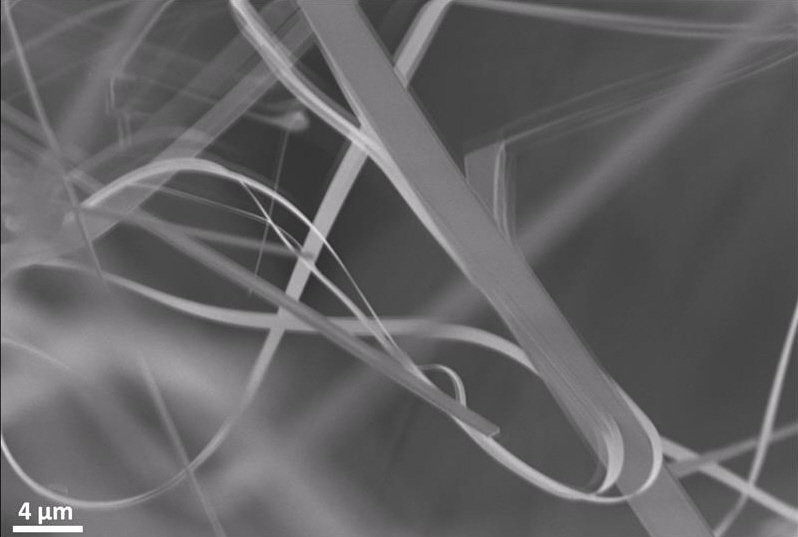Metal oxides in bulk form are generally brittle, which limits their desired utilizations. Their one-dimensional (1D) structures, such as belt-like nanostructures, exhibit much more application potential because of their high surface to volume ratio. This ratio induces extraordinary physical and chemical properties, including a high degree of bendability.

Pasta like SnO2 structures vibrating under the electron beam of the electron microscope. Credit: Mishra/Wiley-VCH
“However, 1D nanostructures are still difficult to use, because integrating them in real devices is a challenging task. To overcome this issue, we have developed three-dimensional (3D) macroscopic material from 1D tin oxide belt-like nanostructures. The resulting ceramic networks exhibit most of the nanoscale properties, including flexibility. It can therefore be freely utilized for any desired application. We are very pleased that our recently introduced flame transport synthesis method on the basis of zinc oxide now enables the simple synthesis of interconnected 3D networks from tin oxide,” says Dr. lead author Yogendra Kumar Mishra, group leader of the working group Functional Nanomaterials at Kiel University.
“The fascinating part is the structure of the single belt-like nanostructures delivered by this synthesis on the basis of tin oxide crystal structure. In contrast to ceramic produced with zinc oxide, which leads to very short tetrapod structures, tin oxide gives long, flat structures. They are just like fettucine,” added Professor Rainer Adelung, Chairperson of the Functional Nanomaterials group.
“And these long flat noodles grow together in a very specific way: In the oven used for the synthesis, temperatures stay just below the melting point of tin oxide. Thus, the noodles find specific interconnection points by kinetics instead of thermodynamics. Each junction is forced into a well-defined angle following strict geometric principles, which are based on so-called twinning defects, as further confirmed by simulation studies,” concluded Professor Lorenz Kienle, Chairperson of the Synthesis and Real Structure group.
The structural design of the tin oxide 3D network, meaning the grown-together noodles, was investigated in detail using transmission electron microscopy.
“The 3D networks from tin oxide exhibit interesting features, such as electrically conducting, high temperature stable, very soft and stretchable architecture, and could thus be interesting for several technological applications,” says Mishra.
For example, a portable electronic sensing device has already been fabricated. And, according to Mishra, it demonstrates significant potential for UV light or gas sensing applications. “Until now, we have tested sensing applications. Further potential applications could also be flexible and stretchable electronic devices, luminescent actuators, batteries, smart cloths or sacrificial templates for the growth of new materials.”
Citation: Ingo Paulowicz, Viktor Hrkac, Sören Kaps, Vasilii Cretu, Oleg Lupan, Tudor Braniste, Viola Duppel, Ion Tiginyanu, Lorenz Kienle, Rainer Adelung, Yogendra Kumar Mishra, 'Three dimensional SnO2 nanowire networks for multifunctional applications: From high temperature stretchable ceramics to ultraresponsive sensors', Advanced Electronic Materials DOI: 10.1002/ aelm.201500081





Comments